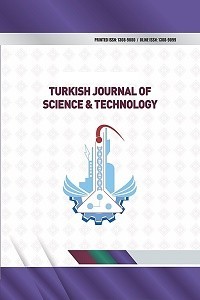A Comparative Study between Matrix Converter Fed InductionMotor Drive and Dual-Matrix Converter Fed Open-End WindingInduction Motor Drive
A Comparative Study between Matrix Converter Fed InductionMotor Drive and Dual-Matrix Converter Fed Open-End WindingInduction Motor Drive
Matrix converter, Dual matrix converter, Direct transfer function approach, Simulation Model, Open-EndInduction Machine Drive,
___
- 1. Riedemanna, J., Andradeb, I., Peñab, R., BlascoGimenezc, R.,Clare J., Melin, P., Rivera, M. (2016). Modulation strategies for an open-end winding induction machine fed by a two-output indirect matrix converter, Mathematics and Computers in Simulation,144-152.
- 2.Wheeler, P.W., Rodriguez P.W., Clare, J.C., Empringham, L., Weinstein, A., (2002). Matrix converters: A technology review. IEEE Transactions on Industrial Electronics, 49(2), 276-288.
- 3. Vargas, R., Rodríguez, J., Ammann, U., Wheeler, PW. (2008). Predictive current control of an induction machine fed by a matrix converter with reactive power control. IEEE Transactions on Industrial Electronics, 55(12), 4362-4371.
- 4. Venturini, M. (1980). A new sine wave in sine wave out, conversion technique which eliminates reactive elements. POWERCON 7, E3-1-E3-15.
- 5. Alesina, A., Venturini, M. (1989). Analysis and design of optimum-amplitude nine-switch direct ACAC converters, IEEE Transactions on Power Electronics, 4(1), 101-112.
- 6. Ahmed, S.M., Abu-Rub, H., Kouzou, A. (2013). Predictive simultaneous power and current control in a three-phase direct matrix converter. International Conference on Power Electronics and Their Applications (ICPEA), Djefia-Algeria.
- 7. Bachir, G., Bendiabdellah, A. (2009). A comparative study between two control strategies for matrix converter. Advances in Electrical and Computer Engineering, 9(2), 23-27.
- 8. Beladel, A., Kouzou, A., Hafaifa, A., Mahia D., (2016). Dual matrix converter feeding an open-end winding load based on modified direct transfer approach, International Scientific Conference on Engineering, Technologies and Systems.
- 9. Altun, H., Sünter, S. (2003). Matrix converter induction motor drive: modeling, simulation and control. Electrical Engineering, 86(1), 25-33.
- 10. Rodriguez, J., Silva, E., Wheeler, P., (2013). Matrix converter controlled with the direct transfer function approach:analysis, modelling and simulation, International Journal of Electronics, 63-85.
- 11. Djahbar A., Mazari B., (2007). High performance motor drive using matrix converter, Acta Electrotechnica et Informatica, 2(7).
- 12. Guizana, S., Ammar, F.B., (2005). Dual open-end stator winding induction machine fed by redundant voltage source inverters, Turkish Journal of Electrical Engineering & Computer Sciences, 92(2), 2171-2181.
- 13. Riedemann, J., Clare, J.C., Wheeler, P.W., Blasco-Gimenez, R., Rivera, M., Pena, R. (2016). Open-end winding induction machine fed by a dualoutput indirect matrix converter. IEEE Transactions on Industrial Electronics, 63(7), 4118-4128.
- 14. Gopal, M., Gopakumar, K., Tekwani, P.N., Emil, L.A., (2007). Reduced-switch-count five-level inverter with common-mode voltage elimination for an open-end winding induction motor drive, IEEE Transactions on Industrial Electronics, 54(4).
- 15. Elbar, M., Mahmoidi, M.O., Naas, B., (2010). A Carrier-Based PWM Techniques Applied to a ThreeLevel Four-Leg Inverter For Use as a Shunt Active Power Filter, J. Electrical Systems, Special Issue (2), 47-57.
- ISSN: 1308-9080
- Başlangıç: 2009
- Yayıncı: Fırat Üniversitesi
Optimization for Next Generation Wireless System Using Radio Over Fiber in Terms of Topology
Shwan Asaad Othman OTHMAN, İbrahim TÜRKOĞLU
Performance Analysis of 20 Gb/s QPSK Modulated Dual Polarization Coherent Optical OFDM Systems
TiO2 Memristor Modelling with LabVIEW
Muhammet Emin ŞAHİN, Hasan GÜLER
LSE Channel Estimation and Performance Analysis of OFDM Systems
Bircan KAMIŞLIOĞLU, Ayhan AKBAL
A. BELADEL, A. KOUZOU, A. HAFAIFA, Sedat SUNTER, D. MAHIA
PWM Control of AC Chopper Fed by Unbalanced 3-Phase Voltage Source
Study of Fuzzy Logic Control of Dc-Dc Buck Converter
Zeynep Bala DURANAY, Hanifi GULDEMIR
Development of Smart Security System for Remote Control Using Small Computer
Huda AL-SAFFAR, Ergun ERÇELEBİ
PI and Fuzzy Logic Control of Photovoltaic Panel Powered Synchronous Boost Converter
